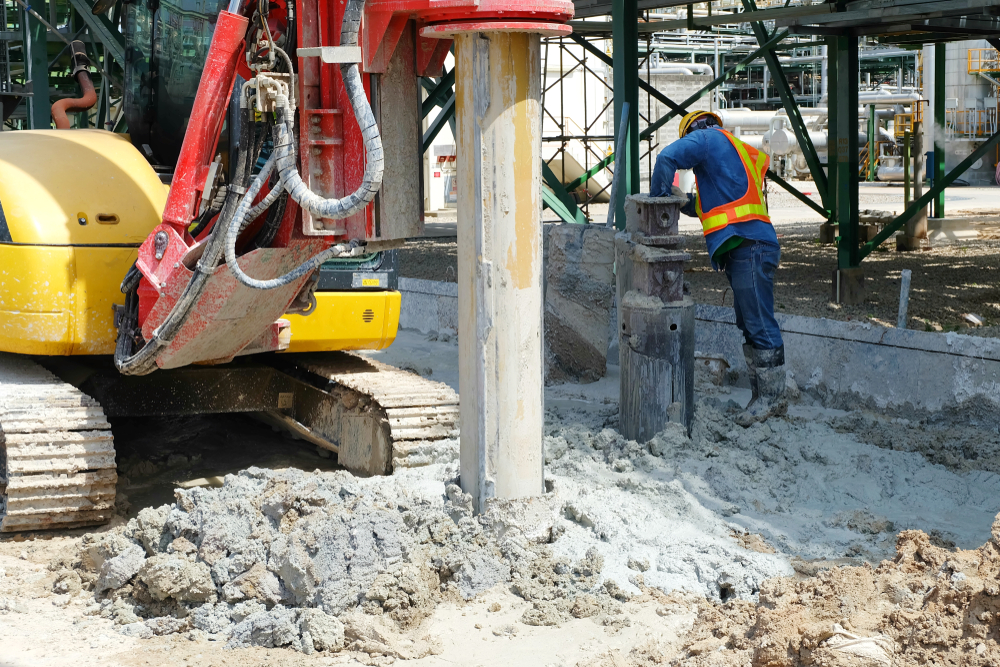Little Known Facts About Geotechnical Engineering For Construction Projects.
Little Known Facts About Geotechnical Engineering For Construction Projects.
Blog Article
How Geotechnical Engineering For Construction Projects can Save You Time, Stress, and Money.
Table of ContentsSome Ideas on Geotechnical Engineering For Construction Projects You Need To KnowWhat Does Geotechnical Engineering For Construction Projects Do?The Basic Principles Of Geotechnical Engineering For Construction Projects Little Known Facts About Geotechnical Engineering For Construction Projects.The Best Strategy To Use For Geotechnical Engineering For Construction ProjectsIndicators on Geotechnical Engineering For Construction Projects You Should Know
The function of geotechnical design dramatically manages realizing the functions of soil and rock, which may differ dramatically by their thickness, moisture web content etc. These features must be checked out by geotechnical engineers to anticipate their activities under numerous conditions. The safety and security in addition to stability of frameworks are influenced by dirt problems, making this evaluation needed.A geotechnical engineer will certainly check out dirt to establish the bearing ability of the earth and recommend appropriate structure types, such as superficial structures, deep structures like stacks, or specialized remedies like floating structures for soft soils. Understanding the attributes and activities of soil and rock, in addition to how they engage with buildings that have actually been set up on or within them, is one of the primary descriptions for why geotechnical engineering is essential.
Environmental protection is accomplished via geotechnical design. Proficiency in air, water, and dirt quality maintenance is placed to utilize by geotechnical designers to lessen the unfavorable impacts of tasks.
Facilities growth, offshore engineering, passage building and construction, and deep foundations. Risk-based design and multidisciplinary groups. These parts will maintain the area developing and guarantee its continued value in the years ahead. To summarize, geotechnical engineering is a vital discipline that preserves the resilience and honesty of civil framework. Geotechnical engineers add to making building tasks efficient throughout the world by recognizing the practices of earth materials and using suitable planning approaches.
Geotechnical Engineering For Construction Projects Can Be Fun For Everyone
The foundational stability of any type of project is important. Geotechnical design plays a vital function in making sure that structures are developed on solid ground, essentially and figuratively. By checking out dirt, rock, and subsurface conditions, geotechnical engineers offer essential insights that aid in the layout, building and construction, and upkeep of structures and framework.

Geotechnical Engineering For Construction Projects Things To Know Before You Buy
Laboratory screening: Figuring out the buildings of dirt and rock. Several top-level construction projects have actually efficiently made use of geotechnical engineering to guarantee their security and security.

As a leader in geotechnical design, BECC Inc. is committed to delivering innovative and efficient options that fulfill the highest standards of navigate to these guys quality and security. To find out more on how BECC Inc. can sustain your next building and construction job, call us today and allow us aid you build on strong ground.
William Rankine, a designer and physicist, created an alternative to Coulomb's earth stress theory. Albert Atterberg developed the clay consistency indices that are still utilized today for dirt classification. In 1885, Osborne Reynolds recognized that shearing causes volumetric dilation of dense products and contraction of loose granular materials. Modern geotechnical design is stated to have begun in 1925 with the publication of Erdbaumechanik by Karl von Terzaghi, a mechanical engineer and rock hound.
The Definitive Guide for Geotechnical Engineering For Construction Projects
Terzaghi additionally developed the framework for concepts of bearing capability of foundations, and the concept for forecast of the price of negotiation of clay layers due to consolidation. After that, Maurice Biot totally established the three-dimensional dirt loan consolidation concept, prolonging the one-dimensional design previously created by Terzaghi to more general theories and introducing the collection of standard formulas of Poroelasticity.
Geotechnical engineers check out and figure out the buildings of subsurface conditions and materials.
Indicators on Geotechnical Engineering For Construction Projects You Should Know
Still, they are occasionally made use of to enable a geologist or designer to be reduced into the borehole for direct visual and manual examination of the soil and rock stratigraphy. Numerous dirt samplers exist to fulfill the needs of various engineering jobs. The common infiltration test, which utilizes a thick-walled split spoon sampler, is one of the most common method to collect disrupted samples.

Typically, the user interface's specific geometry is unidentified, and a simplified interface geometry is assumed. Limited inclines call for three-dimensional versions to be evaluated, so most slopes are assessed assuming that they are infinitely broad and can be represented by two-dimensional designs.
9 Simple Techniques For Geotechnical Engineering For Construction Projects
Developing the style based on a functioning hypothesis of behavior prepared for under the most potential problems. Choice of quantities to be observed as construction earnings and calculating their prepared for worths based on the working hypothesis under the most undesirable conditions.
Dimension of amounts and assessment of actual problems. It is improper for projects whose design can not be altered throughout construction.
Report this page